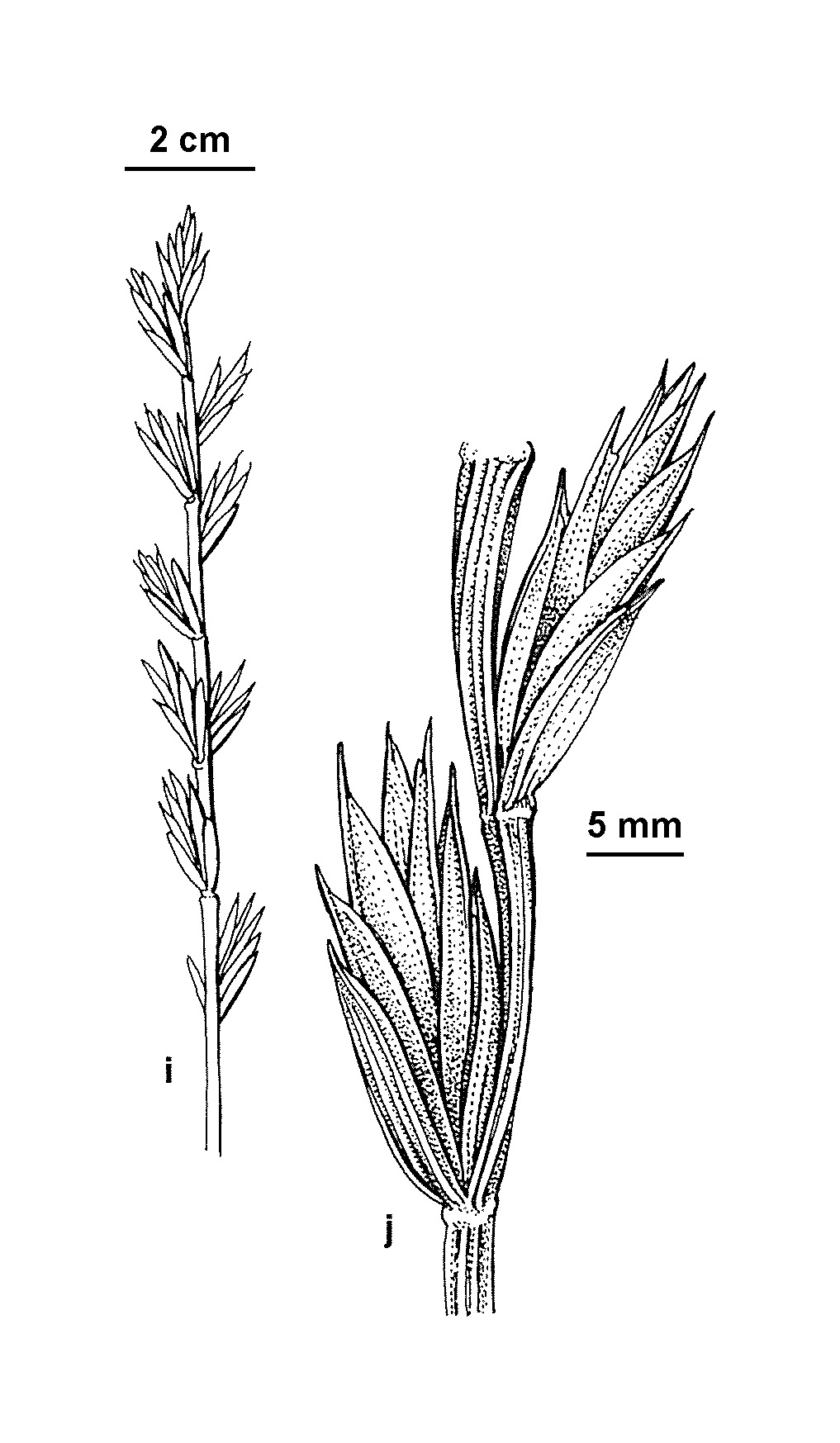Thinopyrum junceiforme
(A. & D.Löve) A.Löve Sea Wheat-grassStrongly rhizomatous, often glaucous perennial. Culms erect, to 40 cm high, hardly exceeding upper leaves. Leaf-blades flat or convolute, often pungent-pointed, to 40 cm long, 1–5 mm wide, smooth and glabrous on the lower (outer) surface, finely scabrous-pubescent along the nerves on the upper (inner) surface; sheaths smooth and glabrous; ligules truncate, membranous or minutely ciliate at apex, c. 1 mm long; auricles not developed. Inflorescence a distichous spike, 7–30 cm long of 2–12 spikelets; rachis glabrous, breaking at nodes at maturity. Spikelets 4–9-flowered, 14–26 mm long; glumes obtuse or toothed at apex, 10–18 mm long, subequal or the upper longer by up to 2 mm, asymmetrically keeled; lemma lanceolate, 10–18 mm long, keeled toward apex, smooth, obtuse, or emarginate and shortly mucronate; palea subequal to lemma; anthers 5–8 mm long. Flowers Dec.
Wim, VVP, GipP, OtP, WaP, WPro, OtR. Also SA, Tas. Indigenous to European coasts. Occurs exclusively on coastal dunes often extending to below the high-water mark. Introduced as a sand-binder. In recent decades it appears to have become a more prominent species along shores, sometimes seemingly out-competing planted Marram (Calamagrostis arenaria) and native Spinifex sericeus and Poa billardierei. When occurring wth Calamagrostis, T. junceiforme usually occupies the lower slope of the shore and is more prone to, and more tolerant of inundation by high tides.
The recorded occurrences of Thinopyrum junceum (L.) A. Löve from Australian coasts have been the result of misidentification of T. junceiforme. The 2 species form part of a complex polyploid series and have in the past been considered as subspecies (of Elymus farctus). Apart from differing chromosome numbers (42 or 56 as opposed to 28 for T. junceum and T. junceiforme respectively), the only unequivocal morphological feature which separates the two species is anther length (10–12 mm for T. junceum and 6-8 mm for T. junceiforme).
Walsh, N.G. (1994). Poaceae. In: Walsh, N.G.; Entwisle, T.J., Flora of Victoria Vol. 2, Ferns and Allied Plants, Conifers and Monocotyledons, pp. 356–627. Inkata Press, Melbourne.
 Spinning
Spinning


